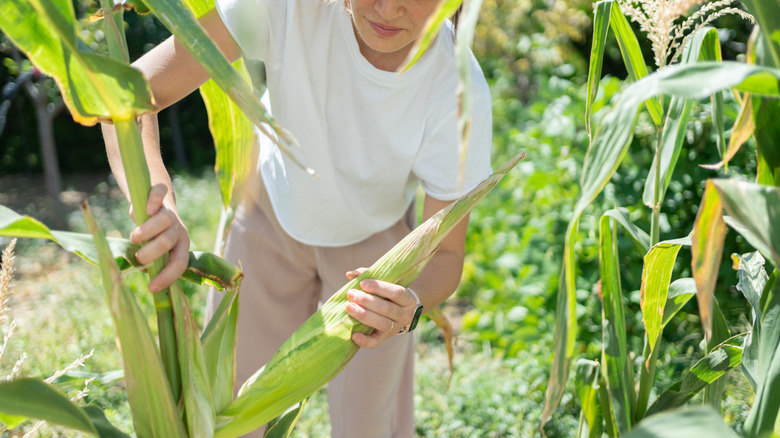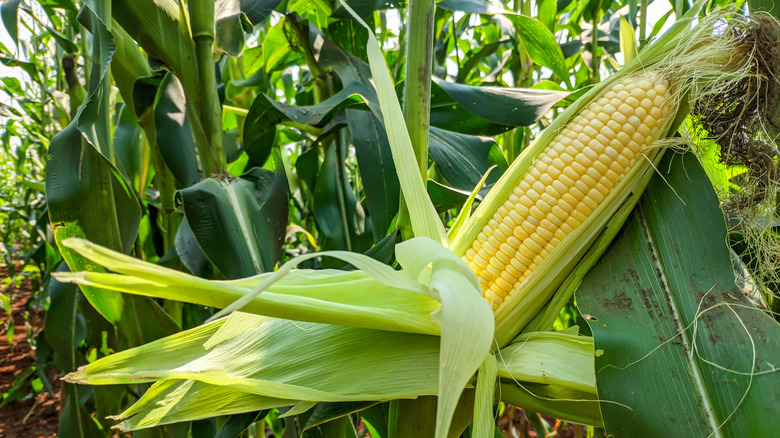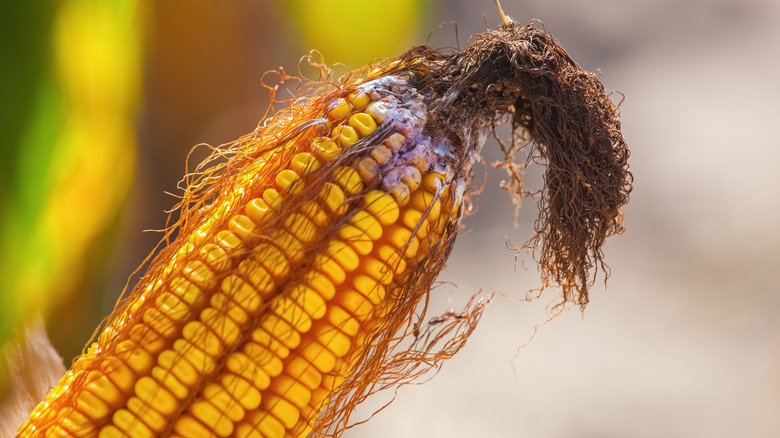Ways You Can Tell Your Corn Is Ready To Harvest
Knowing when to harvest corn is a skill that can make all the difference in the quality and taste of your crop. Reaping at the wrong time can lead to disappointment, as the perfect balance of sweetness and tenderness can be elusive. Harvesting prematurely can result in underdeveloped kernels that aren't very sweet while waiting too long can lead to tough, dry corn. Picking it at the right time guarantees the best flavor and nutritional content.
Depending on the variety, sweet corn is typically at peak ripeness between 60 and 100 days from planting. There are a few things you can look out for to determine the best time to pick your crop. For example, you can check the color and texture of the husks and silk. Also, you want to make sure the kernels are plump and the cobs are fully developed. You can even perform a simple "thumb test" to help you figure out if your corn is ready for picking and enjoying.
Checking corn for ripeness
One of the easiest indicators that corn is ready to pick is the color of the husks and kernels. When corn is ripe, the husks are bright green and fresh-looking. Another thing to consider is the condition of the silks that protrude from the top of the ear. When they're dry and crunchy to the touch, it's a good sign that the corn is ready.
Give the cob a little squeeze and feel for plumpness. Then, peel back a small section of the husk to expose some kernels. Mature corn also has well-filled, bright, and evenly colored kernels. If you see kernels that are unevenly colored or have gaps, it's a sign that the corn isn't quite ready yet. Another way to test if the corn is ready is to press your thumbnail into a kernel on the ear. If the liquid inside the kernel is milky, the corn is good to go. But if it's watery, the ear may need more time on the stalk. If it's dry, the corn is past its prime.
Considerations for a successful corn harvest
While assessing the readiness of your corn for harvest, be vigilant for signs of pests, disease, or rot that may affect the quality of your crop. Along with the presence of pests, look for holes or tunnels made by worms and insects. Watch for symptoms of common corn diseases, such as smut or rust, like black, powdery growth on kernels or reddish-brown spots on the leaves and husks. Moldy or rotting kernels may appear discolored, have a foul odor, or feel mushy. If you notice extensive disease damage, harvest as soon as possible to salvage what you can.
External factors can also affect timing your harvest accurately. For example, wet or rainy weather can increase the risk of mold or mildew. Extremely hot and dry conditions can decrease crops. The type of corn you're growing also influences the ideal harvest time. Sweet corn varieties are typically harvested at the "milk stage," when the kernels are still tender and full of natural sugars. Field corn, used primarily for animal feed and industrial purposes, is harvested later when the kernels have hardened. Be sure to know the specific variety you're cultivating and its recommended harvest stage.


